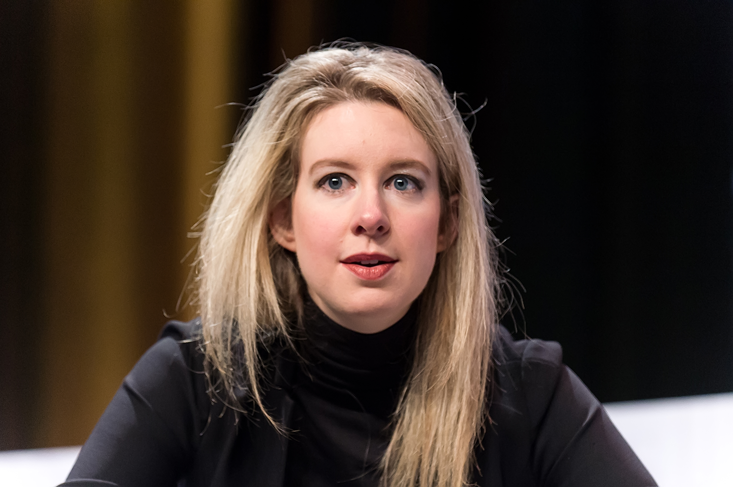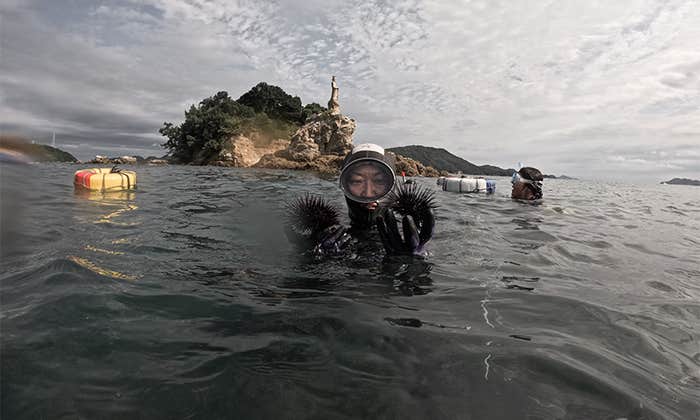Silicon Valley has a term for startups that reach the $1 billion valuation mark: unicorns. The term is instructive. It suggests not only that hugely successful startups are rare, but also that there’s something unreal about them.
There’s no recent Valley startup that satisfies both dimensions better than Theranos. Founded by a 19-year-old Stanford dropout, Elizabeth Holmes, who went on to become the world’s youngest self-made female billionaire, it raised nearly a billion dollars from investors and was valued at $10 billion at its peak. It claimed to have developed technology that dramatically increased the affordability, convenience, and speed of blood testing. It partnered with Safeway and Walgreens, which together spent hundreds of millions of dollars building in-store clinics that were to offer Theranos tests. Tens of thousands of Americans had their blood tested by its proprietary technology.

The problem was that Theranos’ technology was never close to ready. In a series of devastating articles published in the Wall Street Journal starting in 2015, reporter John Carreyrou reminded us that unicorns are usually found only in fairy tales. Theranos, he reported, was analyzing many of the blood samples it received using off-the-shelf commercial blood analyzers. Samples analyzed with Theranos’ own technology often produced inaccurate results. Some patients were rushed to a hospital on the basis of erroneous readings, only to be sent home when their blood was properly analyzed by the hospital. Even worse, Theranos was using brutal intimidation tactics against its own employees to stop the truth from coming out.
This month, Carreyrou’s book about the Theranos saga, Bad Blood, was released. It reads like a page-turner in the finest tradition of Michael Crichton, complete with secondary and tertiary characters and finely detailed scene settings, with the tragic difference that everything in it is true. It has already been purchased—after a bidding war—by a Hollywood studio, which has cast Jennifer Lawrence as Holmes.
We caught up with Carreyrou by phone last week.
If someone told you that your Theranos reporting would end up as a Hollywood movie, what would you have said?
You know it’s funny, because early on in my reporting I felt like I was in a movie, especially when Theranos started waging a scorched-earth campaign against me and my sources. Yeah, I wouldn’t have believed it if someone would have told me it was going to be a Hollywood movie and Jennifer Lawrence was going to play Elizabeth Holmes.
What was Theranos’ vision?
The vision to begin with was a portable blood testing device that could run the full range of lab tests, any tests you really needed from a drop or two of blood pricked from the finger with results that you would get back very fast and at a fraction of the cost of traditional laboratories. The dream was to eventually have these machines in people’s homes.
Why is that a big deal?
There are a lot of people who dread the hypodermic needle, and hate seeing tubes and tubes of blood drawn from their arm, and actually put off blood draws and don’t get lab tests done as often as they should. Assuming what Theranos said it invented was real, it could have been a game changer, and could have resulted in people getting their blood tested more often. It could have changed the dynamics of the blood testing industry, where you have two giants—Quest and LabCorp—who essentially exercise a duopoly.
She got defensive at the probing questions and eventually left in a huff.
Who was Elizabeth Holmes when she started the company?
She was 19 years old and was midway through her sophomore year at Stanford. And she dropped out and incorporated the company, first as Real-Time Cures before later changing the name to Theranos, which was a combination of the words therapy and diagnosis. That was in reference to her very first idea, which was this futuristic arm patch that would draw blood through micro-needles, diagnose you, and then inject the appropriate drug to cure you. She and her co-founder realized very quickly that was essentially science fiction and not feasible, so they pivoted to something inspired by portable glucose monitors. Holmes wanted this new machine to do every blood test under the sun, not just blood sugar.
Were other groups pursuing the goal of doing many blood tests from a drop of blood?
There are thousands of scientists who have been working on this for 20 years in universities and academia. As far as I know based on my reporting, no one has yet cracked this nut.
It took a bit of ego to walk in and say, “I’m going to do this on my own.”
It was a combination of fraud and hubris. She and Sunny Balwani [Theranos’ president] didn’t even have the curiosity to see what competitors were doing and how they were innovating. There was zero curiosity on their part and therefore zero knowledge about what others were doing to innovate in the space.
Who’s the leader in the space?
Well, one instrument that has come up again and again as being one that actually works is called Piccolo Xpress, from a company called Abaxis. It has been commercialized for a while, and can do about 30 or 31 general chemistry assays off a small sample. It’s a semi-portable machine and looks like a miniature ATM. Holmes met with a firm called MedVenture Associates in the early days of Theranos that had a lot of experience in medical technology and had invested in Abaxis. They were familiar with microfluidics and they asked her questions about how her envisioned technology was going to differ from Abaxis’. She didn’t even know that Abaxis had a device and she certainly didn’t understand how it worked. She got defensive at the probing questions and eventually left in a huff.
What technology did Theranos actually develop?
Basically there were three iterations of the technology. The first one used microfluidics, which are basically the repurposing of the micro-fabrication techniques that the computer chip industry pioneered to move tiny volumes of liquid. Theranos tried to work on that for several years before Holmes lost patience in late fall 2007 and abandoned it. At that point she pivoted to what was essentially a converted glue-dispensing robot. One of the engineers ordered a glue-dispensing robot from a company called Fisnar in New Jersey, studied its components and rebuilt a smaller version of it. It was a robotic arm on a gantry with three degrees of motion and a pipette stuck to its end, and it replicated what the scientist does at the bench. That ended up being called the Edison and it could do only one class of test, known as immunoassays. It was also error-prone. The third iteration of the technology was the miniLab, which Holmes wanted to be able to do more than just immunoassays. The miniLab didn’t invent any new techniques to test blood with. It miniaturized existing laboratory instruments and packed them into one box. By the time Theranos went live with its tests, the miniLab was a malfunctioning prototype.
What services did Theranos offer?
Theranos offered 250 different blood tests. Twelve of them were handled by the Edison, and not well, because there were errors. The other 238 were done with regular, old laboratory machines bought from third parties like Siemens. Theranos kept up the illusion that they were running a lot of the tests from finger-stick blood draws by hacking the Siemens machines to work with small samples.
How much money did Theranos raise?
All together it was $900 million. If you count the $65 million in debt financing she got last year from Fortress investment group, the New York private equity fund, it’s almost a billion dollars in all. What’s noteworthy is that the lion’s share of that money was raised after 2013, after she went live with finger-stick tests in Walgreens stores. Getting the validation from making the technology commercial was really what enabled her to raise most of the funding. That’s where the securities fraud part of this comes into play. Early investors like Larry Ellison and Tim Draper were not defrauded. They invested in a brand new start-up with a vision, and they knew very well that most start-ups fail. The investors who came in after 2013 were presented with a company that was 10 years old and that was telling them it had a product that did the full range of tests.
Assuming what Theranos said it invented was real, it could have been a game changer.
How is it possible that so many smart people got hoodwinked?
Holmes was masterful at leveraging the credibility of people with good reputations who were older than she was. The first guy who vouched for her and gave her credibility when she was still a teenager was Channing Robertson, who was a star of the engineering faculty at Stanford and who had been an expert witness for plaintiffs against the tobacco industry. He accompanied her on some pitches to VC firms and gave her credibility. Then, she met Donald L. Lucas, who famously groomed Larry Ellison and helped Larry Ellison launch Oracle publicly. She wrapped Lucas around her finger. He became the chair of her board. He also put her in touch with other investors in the Valley. Then, when Donald L. Lucas started getting addled by Alzheimer’s Disease by 2011, she pivoted to another mark, another older guy—George Shultz, the former secretary of state. By all accounts, Shultz is passionate about science. When she presented her vision to him and told him about her technology, he was wowed and joined her board. Then he introduced her to all these other famous people, the likes of Henry Kissinger and Sam Nunn and Bill Perry, who had been secretary of defense under Clinton. They joined the board themselves, lured in part by shares that were worth millions of dollars. People thought, “Well she must be the real thing if she’s got this fantastic board.”
But none of these people are scientists.
Right. And that’s where you can fault people for being too gullible. One of the first things I looked at when I started doing my digging into the company was how many of the dozen or so board members had any experience in medicine. The answer was two: William Foege, the former CDC director, and Bill Frist, who had been a surgeon before becoming a politician. Neither of them had any particular expertise in laboratory science or blood testing. The rest of the board were statesmen between the ages of 65 and 90, and former military commanders. It’s really not people that made sense to have on the board of a blood testing company.
What were employees telling the outside world?
There were quite a few negative, heartfelt reviews that were being posted anonymously by current and former employees about the company and its practices and culture. Sunny Balwani would have members of the HR department put out a steady stream of fake positive reviews to drown out the negative reviews. That was one of the very surreal aspects of this saga.
How did you first come to suspect something was wrong at Theranos?
The first tip was a third-hand tip. It was a practicing pathologist in Missouri who moonlighted as the writer of this obscure blog called the Pathology Blawg. He had read a profile in the New Yorker magazine about Holmes and wrote a short skeptical item about it. Then he was contacted by a group of people who had either feuded with Holmes or had reason to distrust her. The reason I persevered is I heard early on that there was a primary source out there who was gettable. I pulled on that string. If I hadn’t known of any primary source, I’m not sure I would have spent as much time on it.
What would you say to a science whistleblower today who maybe doesn’t have access to someone like you?
There’s always the possibility of filing complaints quietly and secretly with the regulator, which is ultimately what one of my confidential sources did. Erika Cheung, who worked at Theranos for several months in late 2013 and early 2014, eventually got up the courage to go to a laboratory inspector at the CMS (Centers for Medicare and Medicaid Services), who then immediately launched an inspection of the company. That inspection proved crucial in backing up my reports in the Journal. You can also file complaints with the SEC and DOJ.
Regulators certainly come off as heroes in the Theranos story.
They do. You can fault them for maybe not ferreting out what Theranos was doing soon enough, but once they did get the feeling that things that were going on there were not good, they went in in force, the two agencies, one after the other, and essentially shut the company down. I wouldn’t be too hard on the FDA (Food and Drug Administration) or CMS, because they were lied to. When the CLIA (Clinical Laboratory Improvement Amendments) inspector came to renew the CLIA certificate of the Theranos lab in early December of 2013, she was not shown the part downstairs that Theranos referred to as Normandy, where they had the Edisons and the hacked Siemens machines. She was only showed the regular lab with the commercial machines. That’s misleading the CLIA inspector. That’s lying to federal officials.
The role of lawyers in this story, by contrast, was fairly negative.
Right. The lawyers were there to steamroll people and to intimidate them and to silence them. Holmes’ lawyer, David Boies, was a stroke of genius on Holmes’ part, because he was a real scarecrow for employees who had qualms and who had questions about the way the company was operating. The threat of litigation and of David Boies coming after them was always in the air. As a result, no one spoke up. That’s really what enabled this to go on as long as it did.
There’s certainly a lot of innovation in Silicon Valley, but there’s also an unbelievable amount of arrogance and pretending.
Holmes is still running Theranos and keeping a staff—what is she thinking?
In that way she’s somewhat delusional. Also, all that that’s done is make the Justice Department angrier and more determined to prosecute. I’m somewhat speculating here, but I don’t think that’s been a good stance for her to continue to run the company and proceed as if no wrongdoing had occurred.
What did you learn about the culture of Silicon Valley while reporting this story?
One thing I learned is that there’s certainly a lot of innovation there, but there’s also an unbelievable amount of arrogance and pretending. People in the Valley, just because they made some money, come to assume and to project an image of intelligence and knowing it all. Just because you made some money doesn’t mean you’re invaluable and doesn’t mean that you can pioneer a field in which you have no training. I feel like Theranos is a cautionary tale about the hubris in the Valley.
Is Theranos a sign of the peak of the Valley bubble?
I was convinced that, when my story came out, it would mark the peak of the unicorn boom. Really the bubble hasn’t deflated—maybe a little bit, but not all that much, not in the way that the dot-com bubble deflated in 2000 and 2001. We haven’t seen that in part because these companies are mostly not publicly traded. It takes longer for the real evaluations to work themselves out. But would I maintain today that Theranos is a syndrome of peak Valley? Absolutely.
Should we be surprised that Theranos happened, or surprised that it doesn’t happen more?
I don’t think we should be surprised given what’s gone on in Silicon Valley in the past 10 years with this gigantic flow of money into the Valley in large part triggered by the fact that the Fed kept interest rates so low and investors looked for new places to get returns. With that amount of money flowing in and founders being able to pick and choose who funds them and to turn down investors who do too much due diligence, you have the ingredients for excess and for wrongdoing. I came up as a journalist in the ’90s and reported on some of the corporate scandals around when Enron fell apart. Those, for the most part, were publicly traded companies. Now we have this ecosystem in Silicon Valley of private companies that don’t have the same obligations of putting out quarterly reports and opening the kimono. As a result, I think the risk of things going wrong and of people cutting corners is greater. I don’t think we should be surprised that it’s come to this.
What needs to change?
The SEC needs to police these private companies more, and I think it’s beginning to do that. It signaled with the charges filed against Theranos that is going to do so, because private companies are going to argue, “Well, why is this the SEC’s business? The SEC’s supposed to police the public markets.” But there are markets where you can buy the shares of these unicorns, so the shares of these unicorns are trading. It’s the SEC’s job to police this opaque market. The other thing that I would say is going to be important is whether or not the Justice Department files criminal charges in the Theranos matter. My sources are telling me that that investigation, which has been going on for more than two years, is drawing close to a conclusion and that indictments are likely. I think if indictments are handed up by the grand jury, that is going to be an enormous signal to the Silicon Valley ecosystem that there are consequences for wrongdoing and that it won’t be as easy to get away with this stuff anymore.
Michael Segal is Nautilus’ editor in chief.


























